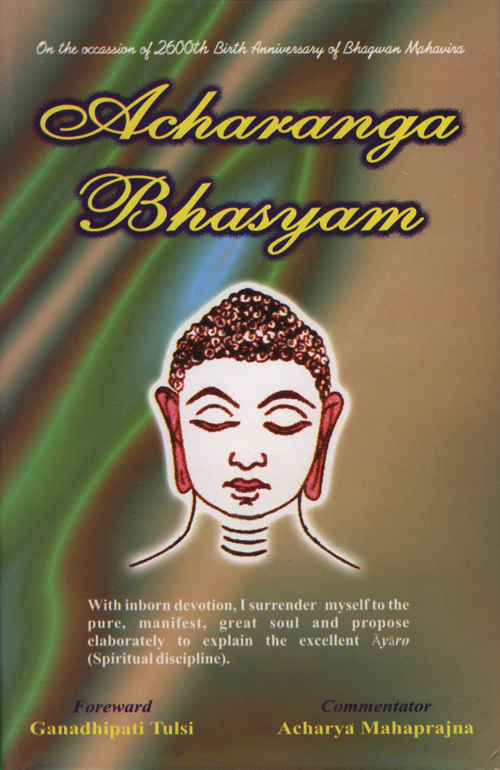According to the Jain Tradition, the Pūrva is the everlasting source of śruta jñana (śabdajñana) i.e. verbal knowledge. But opinions differ over its meanings and authorship. Earlier acharyas believed that the Pūrvas were composed prior to Dvādasāṅgi and that is why they were called Pūrva i.e. prior.[1] However, modern scholers are of the view that 'Pūrva' is the collection of 'Śruta' (sacred lore) of the tradition of Lord Pārśva. It is dated prior to Lord Mahāvῑra and hence called 'Pūrva'[2] But the assumptions lead to one definite conclusion that the Pūrva literature dates prior to the Dvādasāṅgi.
The edition of the Dvādasāṅgi, which is available to us today, probably incorporates the Pūrvas into itself. The twelfth aṅga is 'Dṛṣṭivāda' which has a section titled 'Pūrvagata'. Lord Mahāvῑra first of all dealt with the Pūrvas and explained them. Subsequently Gaṇdharas like Gautama composed the Pūrva literature. Thus the fourteen Pūrvas and the twelve Aṅgas are not distinct.
'Pūrvagata Śruta' was very complicated and not comprehensible for common folk, and, therefore, Aṅgas were composed. Jinabhadra Kshamasramana has said that entire śabdajñāna is manifested in 'Dṛṣṭivāda'. Still the eleven Aṅgas were composed for people of low intelligence and women.[3] The eleven Aṅgas were studied only by those monks who were lacking extra-ordinary calibre. The monks of high calibre, however, used to study only the Pūrvas. The study of the order of the loss of the Āgamas also indicate that eleven Aṅgas were easier than the Pūrvas or had a different form.
According to the Digambara tradition, it is believed that there was no omniscient living beyond 62 years after Mahāvῑra's Nirvāṇa. 'Śrutakevaῑ’ could be found only up to 100 years after that, followed by Daśapurvῑ for next 183 years and then the eleven Aṅgadharas only upto 220 years thereafter.[4]
The above analysis indicates that till Ācāra and other Aṅgas were not composed, the compilation of 'Śruta' in the age of Mahāvῑra was known as 'Dṛṣṭivāda' (Caturdaśa Pūrvas). It was only after the eleven Aṅgas were composed, that the 'Dṛṣṭivāda' was acknowledged as twelfth volume of the Aṅga literature.
Although we find different references [5] like munis who have studied 'twelve Aṅgas’ or the others who have studied fourteen Pūrvas, it cannot be construed that those who studied twelve 'Aṅgas' were unfamiliar with fourteen Pūrvas. Gautama Svami was a known Dvādasāṅgavit [6],but surely he had studied fourteen Pūrvas.
Similarly 'śrutakevalῑ’ is somewhere referred to as 'dvādasāṅgavid’ and at other place as 'Caturdaśapūrvi'. Most of the material in the eleven Aṅgas are collections and compilations of the Pūrvas, and hence one, who is a caturdaśapūrvῑ is obviously a 'dvādasāṅgavit'. The fourteen Pūrvas are condensed in 'Dvādasāṅga', and, therefore, a dvādasāṅgavid and a 'caturdaśapūrvῑ' are not two distinct personalities.
It is difficult to accept the contention that is attributed to some modern scholars that the Pūrvas are contemporary of Lord Pārsvanatha and Aṅgas are that of Lord Mahāvῑra. The transition of Aṅgas and Pūrvas was also prevalent in the times of Lord Ariṣṭanemi and Lord Pārśvanātha. As has been said earlier, Aṅgas were compiled for the common folk. Even in the times of Lord Pārśvanātha, there must have been variations in the scholarly capabilities of munis.
The common sense suggested that in the times of Lord Mahāvῑra the Aṅgas and the Pūrvas were re-edited in order to suit the idiom, language and understanding of the contemporary age.
Nandῑ, Malayagirivṛtti, patrs 240: anye tu vyācakṣate - pūrva pūrvagatasūtrārthamarhan bhāṣate, gaṇadharā api pūrva pūrvagatasūtraṃ viracayanti, paścādācārdikam.
 Acharya Mahaprajna
Acharya Mahaprajna

